Pokémon Legends Arceus' Japanese Influence
The deep and fascinating connection you may not have considered

The Pokémon franchise has drawn inspiration from many cultures, and, being Japanese, it's no surprise they take from their own folklore as well. But with the last mainland game being set in Japan, I wanted to see just how much Japanese culture would permeate the different aspects of the game.
Setting
In this game, the protagonist gets transported back in time to Hisui. To pin down the time period we can use a few things, like the architecture used by Galaxy Team's buildings, their activities, and the differences in clothing. The game also has some user-facing aesthetic choices like using ink brush textures for parts of the interface; these brushes are still in use today but were common at the time.
It's not news that Sinnoh (the present-day name for Hisui) is based on Hokkaidō, a Japanese island. While it's not trying to retell history through a Pokémon lens, it still seems to draw parallels from the Hokkaidō Development Commission (1869 - 1882) where Japan, using help from other nations as well, sought to develop the land before Russia attempted the same.

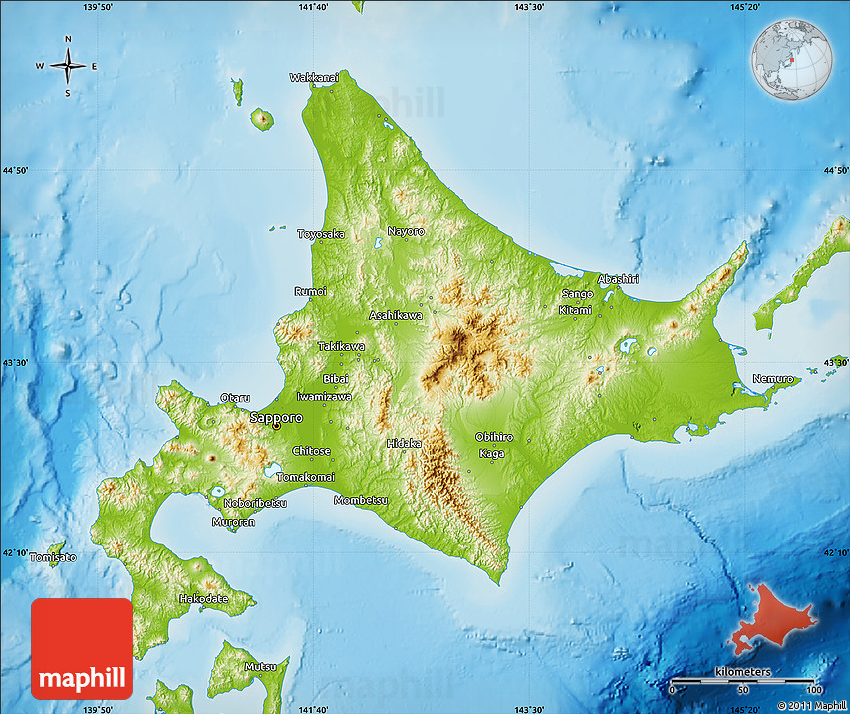
Hōkkaido map. Source: Maphill.
In this game we have Galaxy Team coming to study the Pokémon in the area employing help from Professor Laven who is likely from Galar - Pokémon equivalent to United Kingdom (a few Englishmen participated in the development commission).
Starters
Despite not getting new Pokémon as starters, there are changes in their last evolution, with the designs reflecting the epoch.
Both Decidueye and Samurott draw inspiration from samurai* (well, the latter always did), with Decidueye being a rōnin - a wandering samurai - and Samurott becoming a bandit capable of resorting to petty tricks.
Typhlosion, on the other hand, represents a Buddhist monk. It's described as a gentle spirit guardian that controls 108* ghost flames, which also ties with Spiritomb, who is comprised of 108 spirits.


Left: In-game screenshot. Right: Samurai. Source: Antiques by the sea.
Hisuian Pokémon
The new forms are mostly about adapting to the environment present in this game, like the cold and snow, or volcanic activity from one of the islands, for example. But some of these Pokémon were originally based on Japanese culture and remain so.
Growlithe is seemingly made to be a mix between dog and lion, like the komainu statues that can be found in Japanese shrines. I'd say that its Hisuian form is closer to them due to its mane - though still much cuter.
Arcanine seems to follow the same dog and lion combinations, except being much bigger. Growlithe's white fur turns dark gray when evolving, perhaps to make it resemble smoke, and likely a result of living close to a volcano.


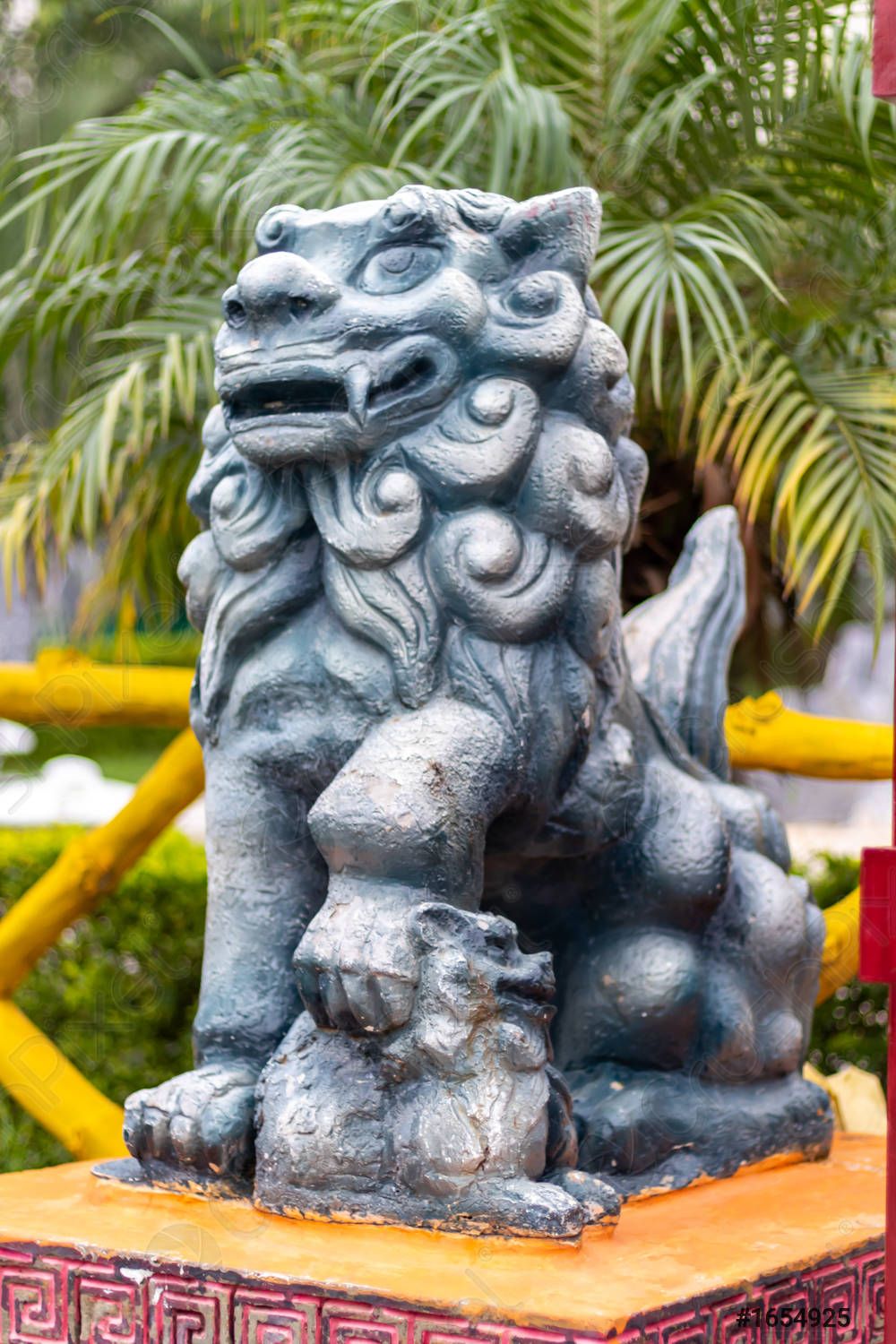
Left: In-game screenshot. Centre/right: Komainu. Source: publicdomainpictures, crushpixel.
Japanese literature has a number of animal yōkai* that are capable of shapeshifting, like the tanuki (Japanese raccoon dog), mujina (Japanese badger), and kitsune** (foxes). Out of these, Zorua resembles foxes the most, and the way their transformation works is similar. Foxes are often portrayed as keeping their tails when transforming into humans - just like Zorua. The Hisuian form changes its type from dark to normal/ghost, drawing another parallel with the supernatural.
Zoroark seems to maintain the kitsune inspiration. It also brings in red highlights to the eyes, nose, and mouth that resemble the makeup used in kabuki* works.
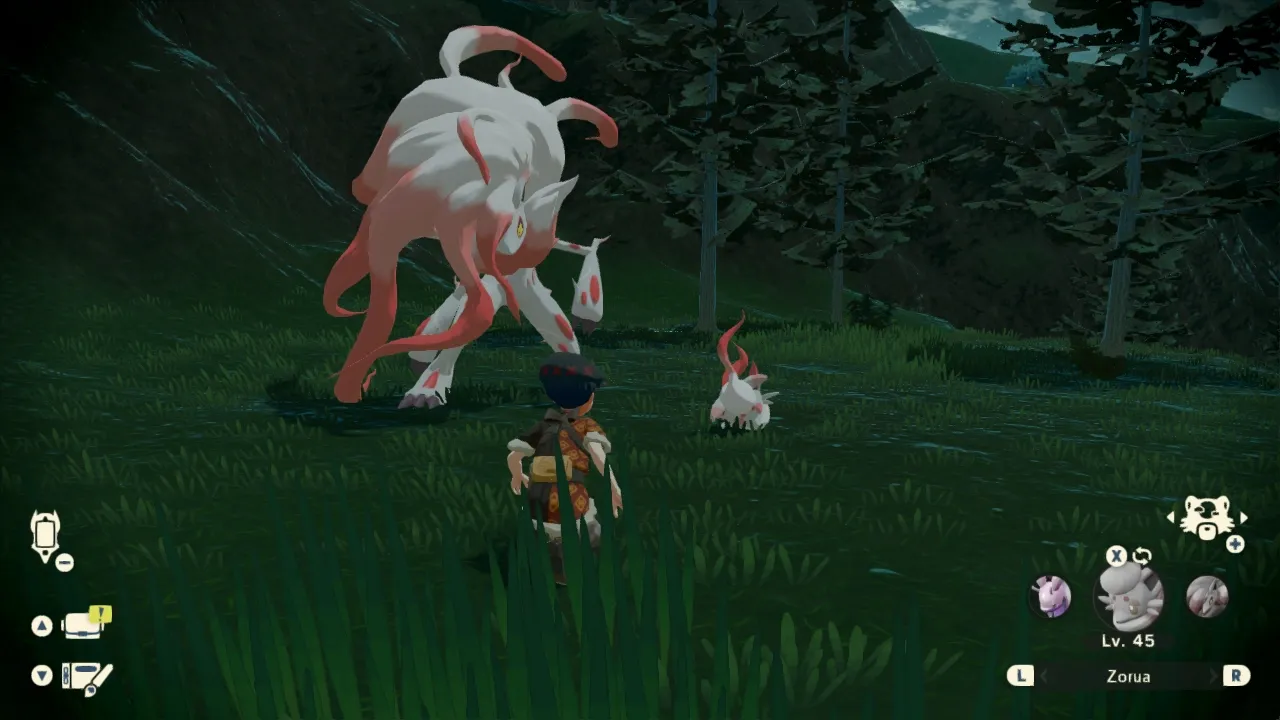


Left: In-game screenshot. Centre: Yako. Source: Yamimmin-planet. Right: Kabuki. Source: cea.
Basculegion is a new addition to this game, said to clad itself with the souls of comrades that died before arriving at their destination upstream. Salmon are a kind of fish that takes a dangerous journey upstream, and they can be found in Hōkkaido. Additionally, its design has a resemblance to old Japanese paintings.
Kamaitachi might have been the inspiration for Sneasel. The kamaitachi is a weasel-like yōkai with very sharp claws and the ability to shape-shift. The Hisuian variant gains the poison type, which might be a reference to the onyūdō, a yōkai that can weaken those in its presence. Some animals, including weasels, are said to be able to shift into its form.


Left: In-game screenshot. Source: Author. Right: Kamaitachi. Source: Sohu.
Requests
In Japan, there was a kind of parlor game known as a gathering of one hundred supernatural tales (Hyakumonogatari Kaidankai) where people would meet at night to tell 100 ghost stories, after each story one of the 100 paper lanterns would get blown out. The supernatural was very popular at the time, and some stories circulated in the form of woodblock prints known as ukiyo-e*.


Left: The Great Wave off Kanagawa. Source: my modern met. Right: Takiyasha the Witch and the Skeleton Spectre. Source: ukiyo-e.
The fact that there are Pokémon stories with the supernatural isn't at all surprising, especially given the time period. There are four requests related to ghosts in this game, and another two that aren't supernatural in nature:
Request 7 has us investigate a Drifloon playing with a child, as they're said to ferry small kids to the afterlife, and rumored to be made of human souls (though other games say that they are the ones who get pulled instead).
We need to deliver a pokeshi for request 18. The pokeshi is a doll based on clefairy in the game, and its name is a combination of Pokémon and kokeshi - a traditional Japanese wooden doll.
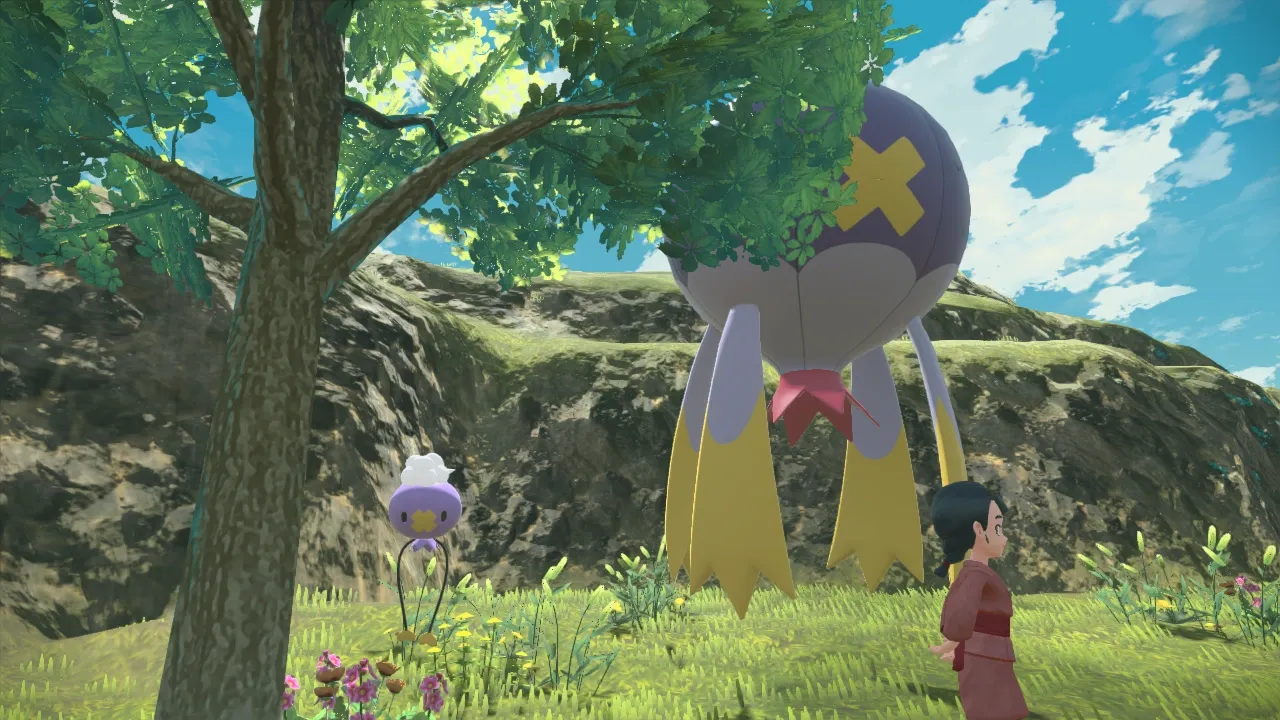


Left/Centre: In-game screenshot. Source: Author. Right: Kokeshi. Source: One Kyoto Gallery.
Chimchar is mentioned to have once been feared as some sort of apparition. In fact, request 20 has a town girl asking us to investigate a floating fire she saw over a tree, calling it a will o' the wisp.
A scaredy-cat of a father promised to go find ghosts with his son, so request 64 has you investigating Gastlies as he thinks learning about them will make them more manageable.
It's possible that Gastly is based on Sōgen Bi, a monk that was punished by his evil deeds in hell and returned as a floating head engulfed in flames. Or it could be based on onibi, floating fire said to come from corpses.
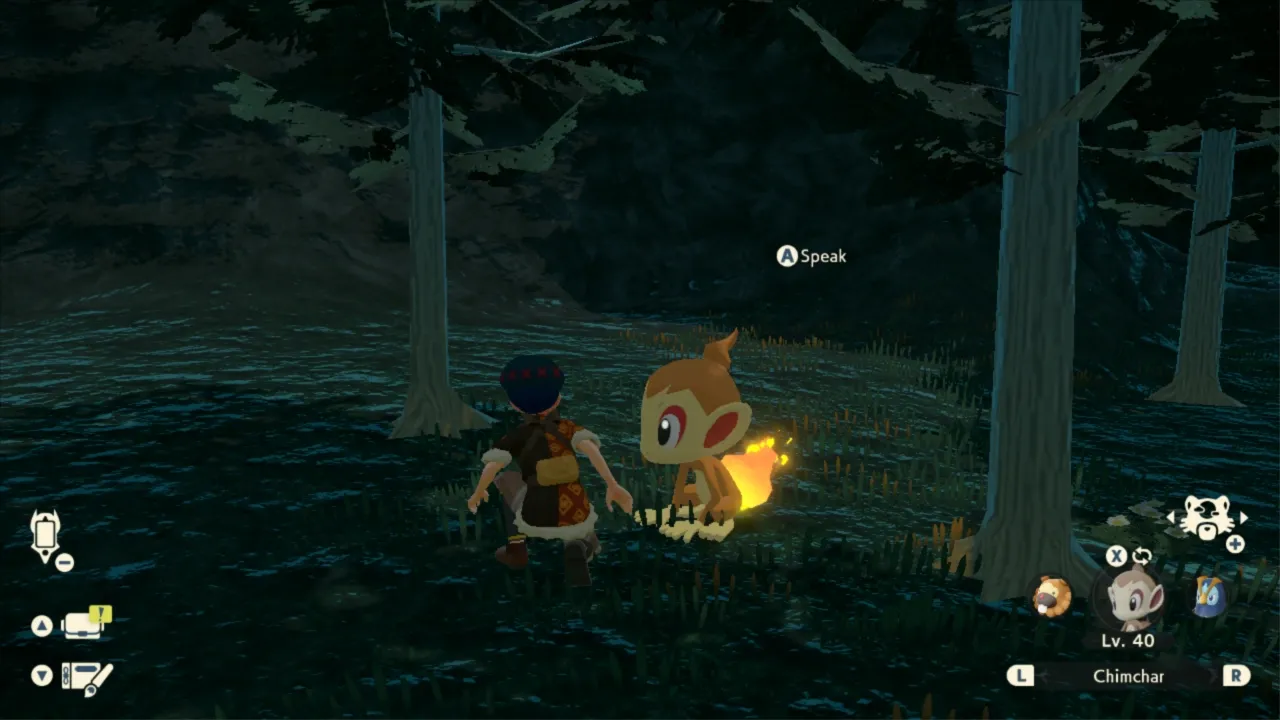

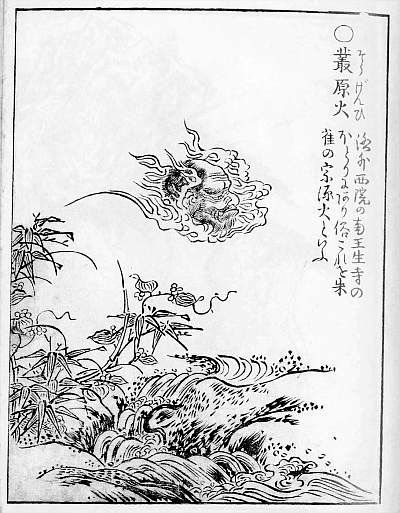
Left: In-game screenshot. Source: Author. Right: Sōgen Bi. Source: History of Japan.
Request 82 has us looking for traces of an old village. By finding some old and torn journal that's watched over by Snorunts and a Froslass we begin to see what unfolded. The journal is split in two, and you'll get the following after picking them up:
February 5
I was on my way back to the village when a blizzard blew in. I decided to take refuge for the night in one of the mountain huts.
I awoke at dawn due to some noise. Before me stood a ... ...arbed in a fine kimono...
Our eyes met, and ... beauty stole the breath fro... my breast - yet it ...s a terrible beauty, frighten... to behold.
I cl...d my eyes in terror, waiting for th... to move on and lea... me in peace.
When ...ext I opened my eyes, the... had disappea... ...eaving nothin... but the driven s...
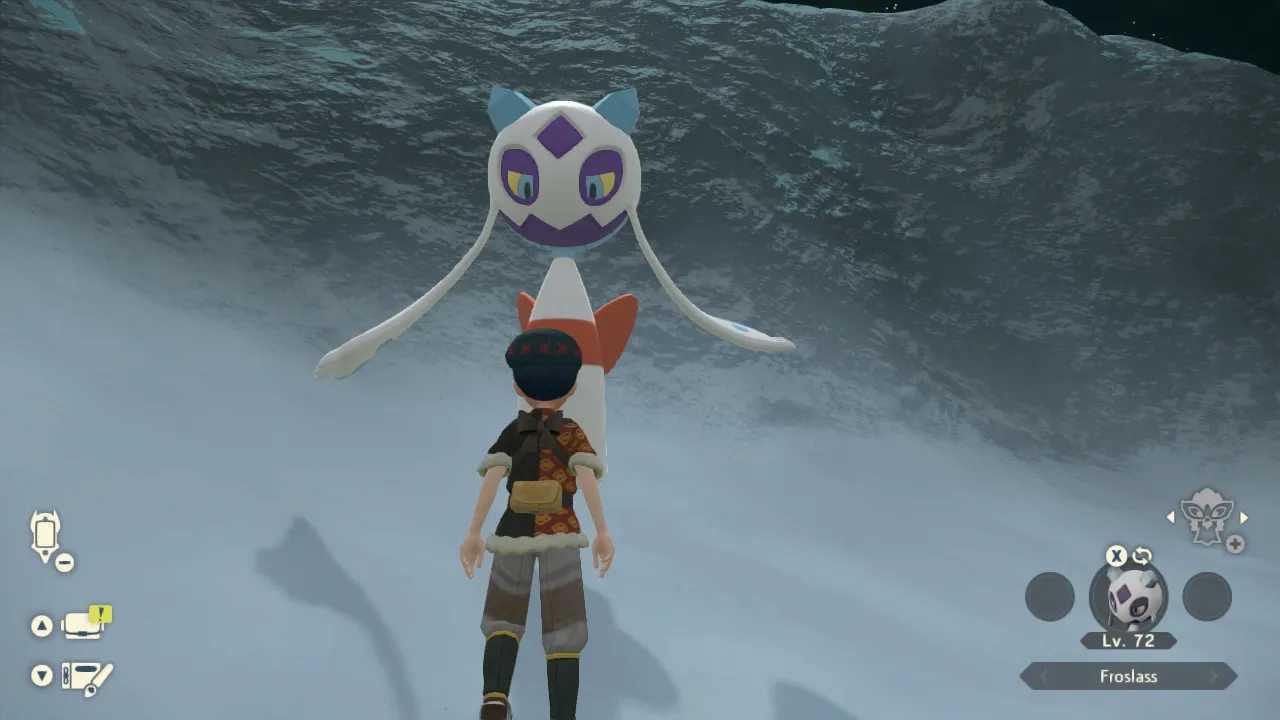
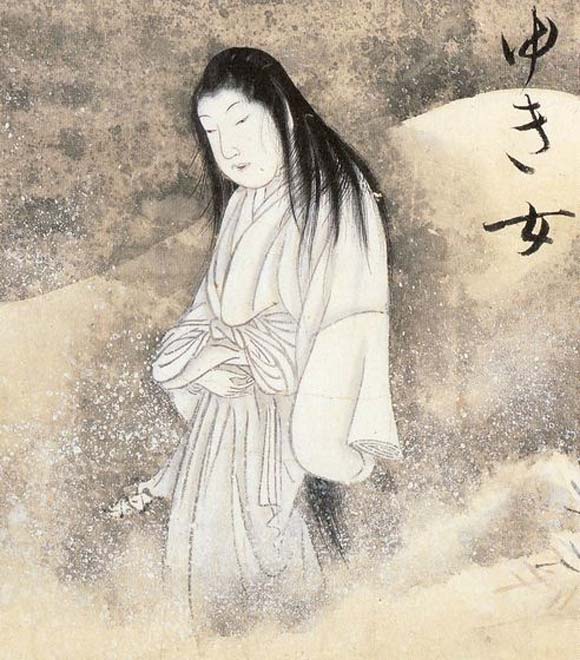
Yuki-onna: Ancient Origins.
The second part reads as follows:
September 1
It's hard to believe it's been ... years now since ...and I egan living together in the ...lage.
I was flipp... through my old journal entries today and ...ppened to be reminded of th... ...I met once...
In an odd way... reminds me of the... that I met that day...
But I remind myself th... I live in the real world, not in a ...rld of old fairy tales. Surely such things c... be true...
January 3
Why did I do it? Why... I have to remember that ...? Why speak of ... to my dear ...? I regret so m... ...t it's too late for reg... now...
...is gone. I have lost ... forever, I know it. ... disappeared, leavi... behind nothing but th... driven snow...
Oh woe, why did I ...er speak of it? If only I h... held my tongue, kept my ...ilence, I wouldn't have ever been ...ed to kno... such grief...
Froslass is based on Yuki-onna (snow woman), so it's easy to surmise that the woman in the story is the same Pokémon protecting it. The content of the journal is based on a Yuki-onna story attributed to Lafcadio Hearn - a Greek Irish writer who moved to Japan in the 19th century.
It's possible that Lafcadio was inspired by another Japanese folktale the crane returns the favor (Tsuru no Ongaeshi) which has another not-human marrying a man and leaving after her identity is found.
We have to look for a place for a Chimecho in the request 85. This Pokémon is based on Japanese wind chimes known as fūrin.
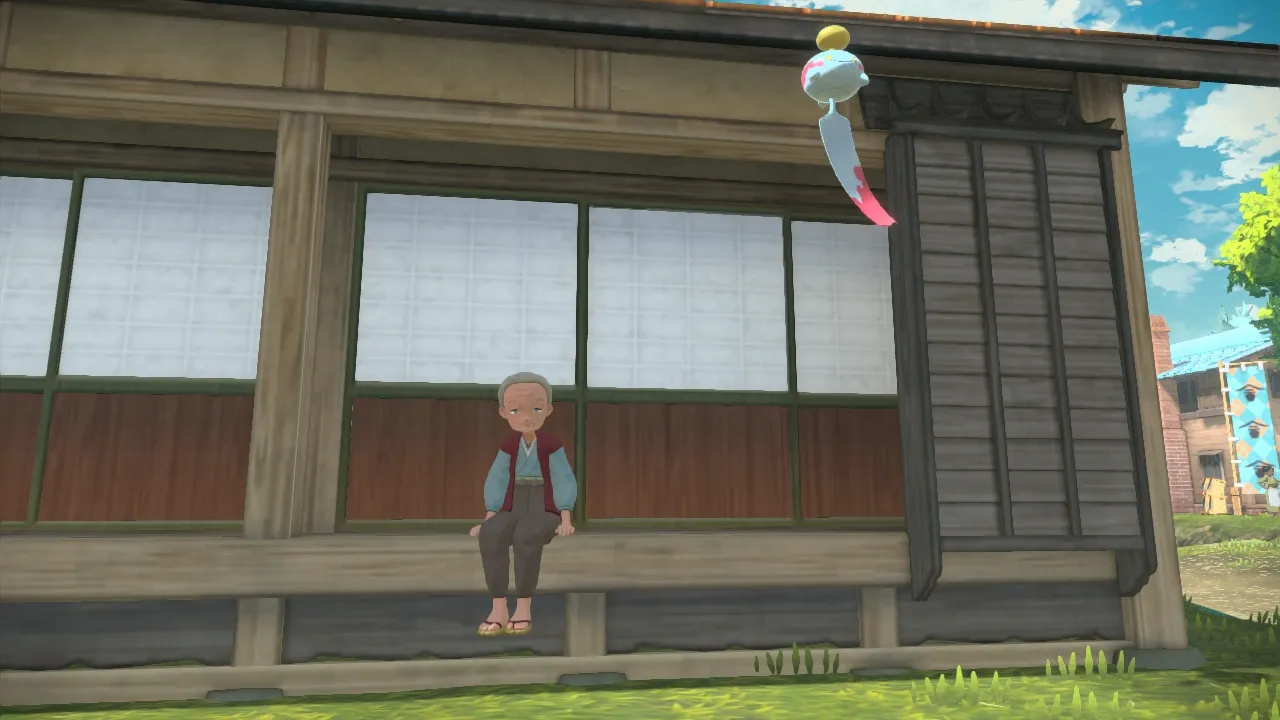
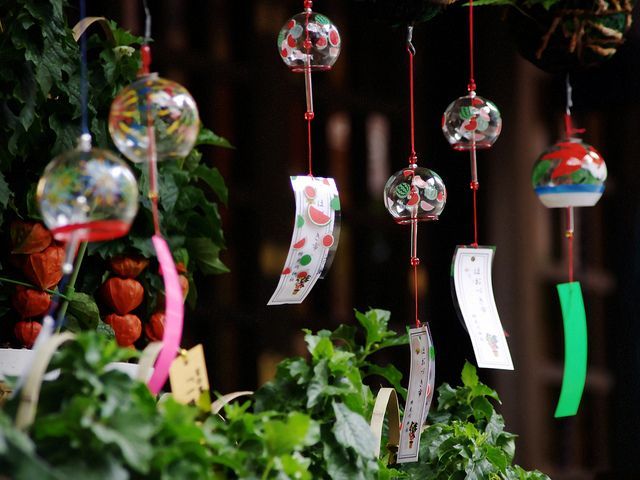
Left: In-game screenshot. Right: Fūrin. Source: Lush food.
Pre-existing Pokémon
While these weren't introduced nor updated in this game, I think it's worth mentioning other Pokémon based on Japanese culture:
Espeon is a psychic cat with a forked tail, which may mean it's based on the nekomata. It's said that cats that live to at long age become gain supernatural powers* along with their tail forking, and they tend to be resentful towards humans, thankfully a trait Espeon doesn't share.
Magikarp and Gyarados are based on a Chinese legend - but I'm counting it here as it's been integrated into Japanese culture as well. The legend says that there's a gate that rests on top of a waterfall, and the few carps that manage to swim upstream to reach it will be transformed into dragons. Japenese versions of this legend tend to specify the fish as koi (a kind of carp), and Magikarp's Japanese name is Koiking.



Left: In-game screenshot. Centre: Nekomata. Source: Livedoor. Right: Dragon gate. Source: formfluent.
In Japanese literature, there's a giant namazu (catfish) that can cause earthquakes, and it's likely the inspiration for Whiscash - a giant catfish that can detect earthquakes.
Spiritombs' concept of being bound to a place might be based on jibakurei: ghosts that are stuck to a place, usually where they died. And as mentioned before, Spiritomb is made out of 108 spirits, a number that is considered important in Buddhism.


Left: In-game screenshot. Right: Namazu. Source: Wikipedia.
The many tails Vulpix has, as well as its ability to learn ghost type moves, might indicate that it's another Pokémon based on kitsune.
Ninetails seems to be based on kyūbi no kitsune (nine-tailed fox). The origin of this creature is Chinese, but it was eventually integrated into Japanese mythology. Those interested in anime probably know this creature from Naruto.
Bronzor and Bronzong can be assumed to be made of bronze by their name, and are likely inspired by the Japanese story "The Bell of Mugen". In that story bronze mirrors are collected from donations in order to make a bell (this kind being known as dōtaku), but a lady comes to regret giving her family heirloom, a dies in shame while placing a curse upon the newly built bell.



Left: In-game screenshot. Centre: Kitsune. Source: Hmong. Right: Dōtaku. Source: The Metropolitan Museum of Art.
The oni is a wrathful yōkai with horns and often depicted wearing a tiger skin. The horned Electabuzz and its tiger-like pattern is likely inspired by it.
Chingling is based on suzu bells which are hung on Shinto shrines. Suzu bells' purpose is to call gods (kami) to receive blessings.
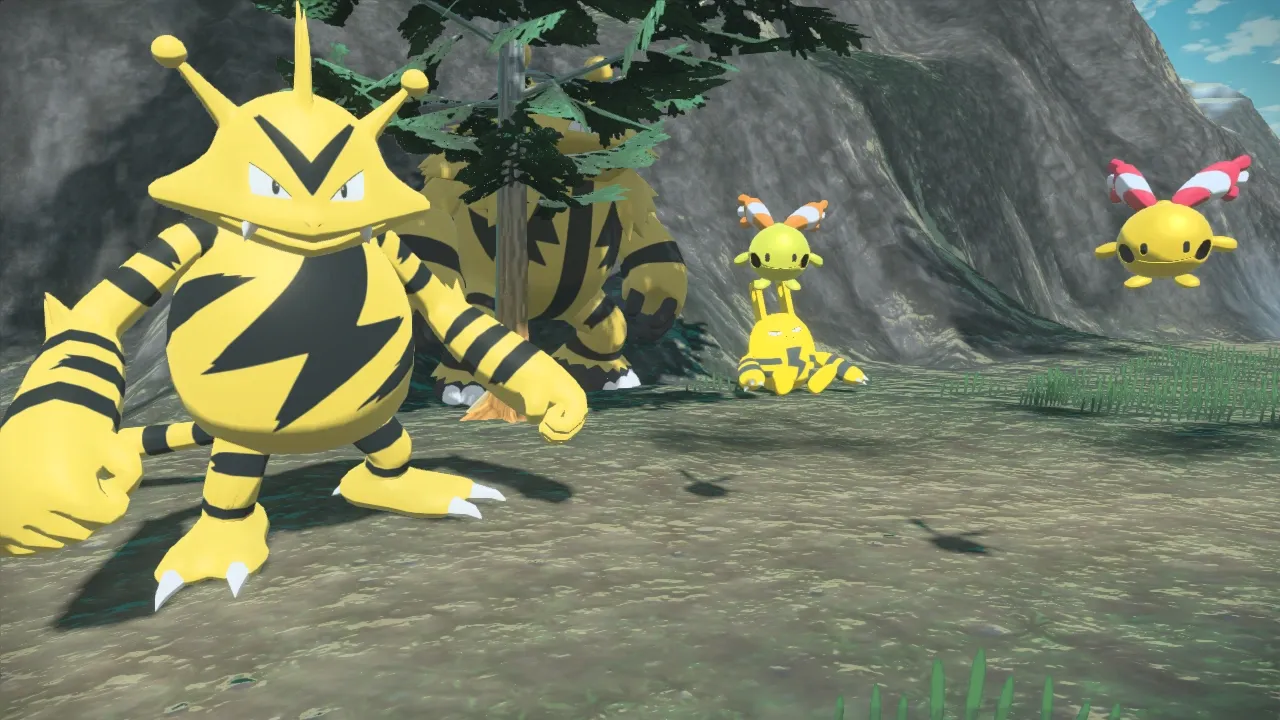


Left: In-game screenshot. Centre: Oni. Source: The way of the sword. Right: Suzu bell. Source: Schneible fine arts.
Nukekubi (meaning removable neck) might be the inspiration for Misdreavus. This yōkai only appears as its floating head form at night (otherwise appearing to be a normal person), and it screams at its victims. This is similar to Misdreavus which resembles a floating head, shrieks at people to scare them, and only appears at night.
Snorunts are based on the yukinko (snow kid). They are sometimes shown wearing a yuki mino - a winter vest that resembles the yellow part of Snorunt - and is said to be the child of yuki-onna. It's also said to bring riches to the houses it visit, which is probably based on zashiki warashi (parlor child), a yōkai that likes to prank people and is said to bring good fortune.
The Japanese name for glalie is onigōri, a reference to oni (as they are to have horns) and as a pun for onigiri* (rice balls).
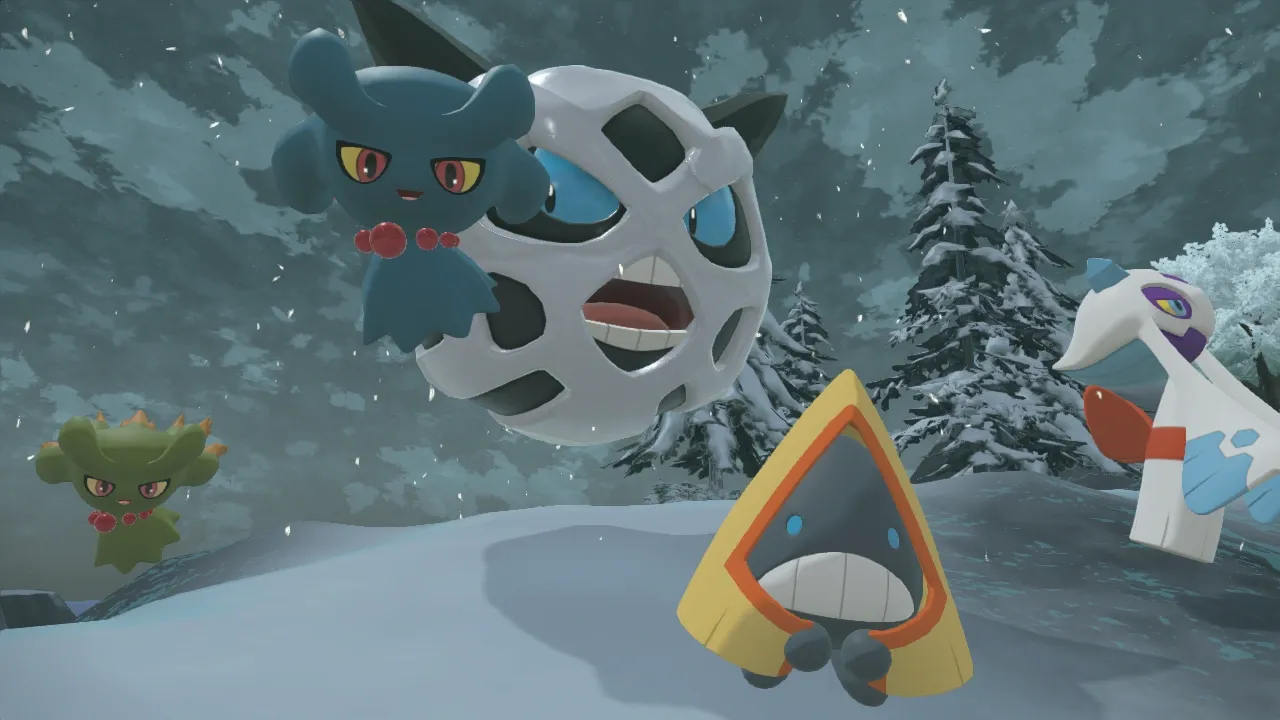
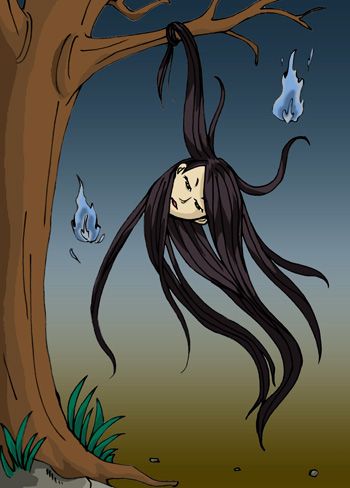

Left: In-game screenshot. Centre-left: Nukekebi. Source: Rikuta99. Centre-right: Yukinko. Source: Livedoor. Right: Onigiri. Source: Alo Japan.
The forces of natures seem to be a combination of different Japanese gods and genies.
Raijin, the god of lightning and thunder, would be the inspiration for Thundurus. Thundurus' tail also has some resemblance to the interconnected drums Raijin uses to channel lightning.
The green skinned Fūjin, the god of wind, appears to be what tornadus is based on. Fujin carries a bag of wind, which is likely why the Pokémon seemingly has a wind motive to its tail. Fūjin and Raijin are often drawn together.
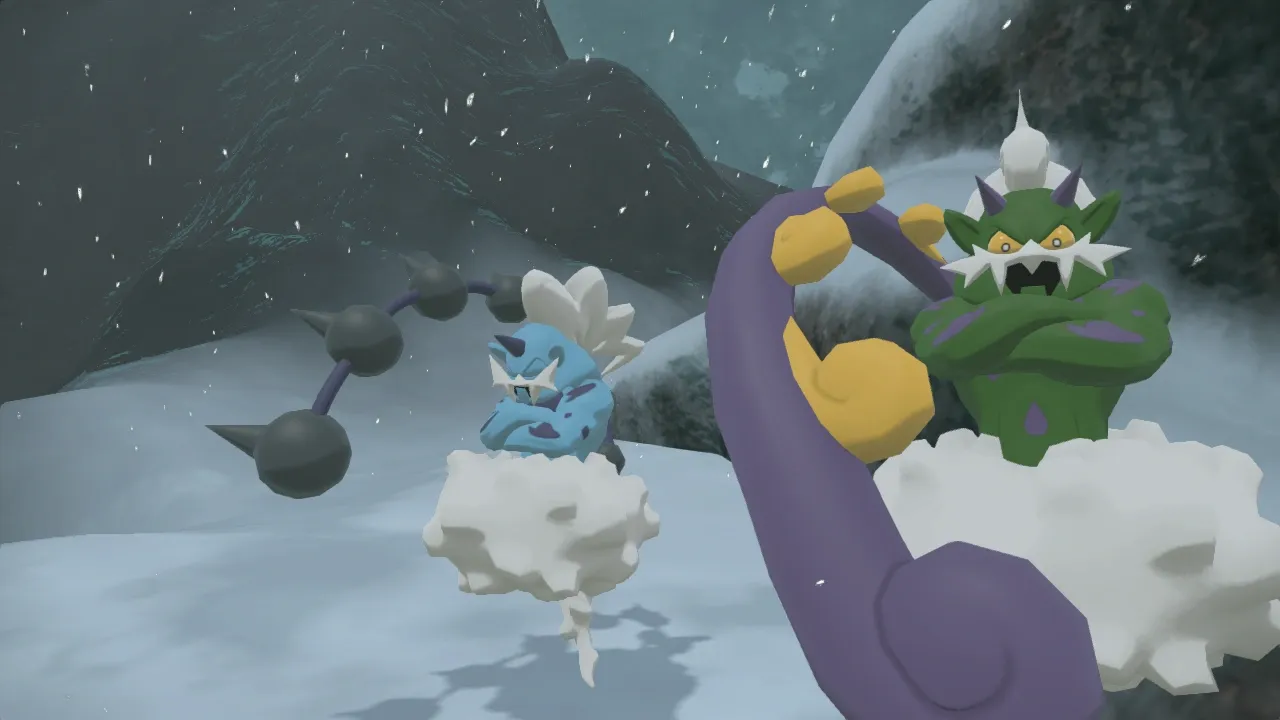

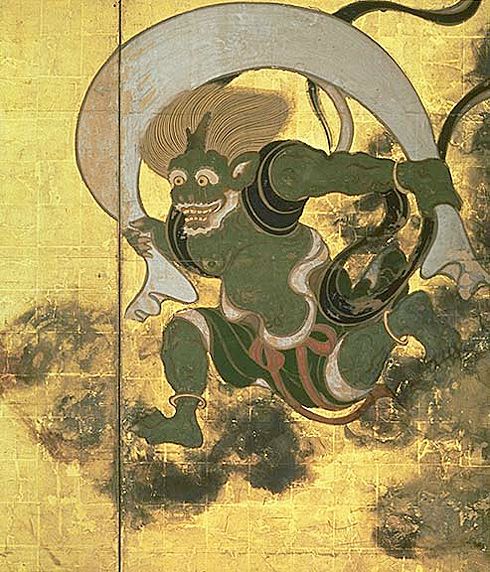
Left: In-game screenshot. Centre: Raijin. Source: Yabai. Right: Fūjin. Source: Kyoto National Museum.
Landorus is said to be the guardian of fields, improving the harvest of the land, much like the god Inari, the deity of fertility, agriculture and foxes.
Ugajin, another god of fertility, seems to be the basis for Enamorous, the Pokémon that ends winter and brings spring. Ugajin is depicted as a head with snake body, whereas Enamorous' tail is similar to a snake's.


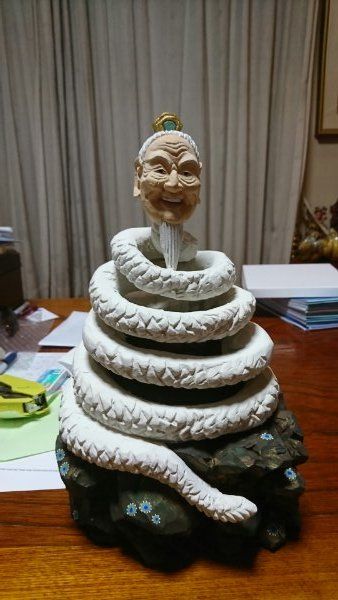
Left: In-game screenshot. Centre: Inari. Source: Mythopedia. Right: Ugajin. Source: Konjichouin.
Most Pokémon get their names localized when the games are translated to English, but some retain their original names - a number of which are based on Japanese linguistics.
Pichu, Pikachu, and Raichu are Pokémon that didn't have their name change outside Japan. For Pichu and Pikachu, the origin is likely to be the combination of pikapika (onomatopoeia for sparkle) and chuchu (onomatopoeia for a squealing mouse). While the rai in Raichu can mean thunder.
The pachi in Pachirisu likely comes from the onomatopoeia pachipachi, which signals crackling (or clapping), while risu means squirrel.
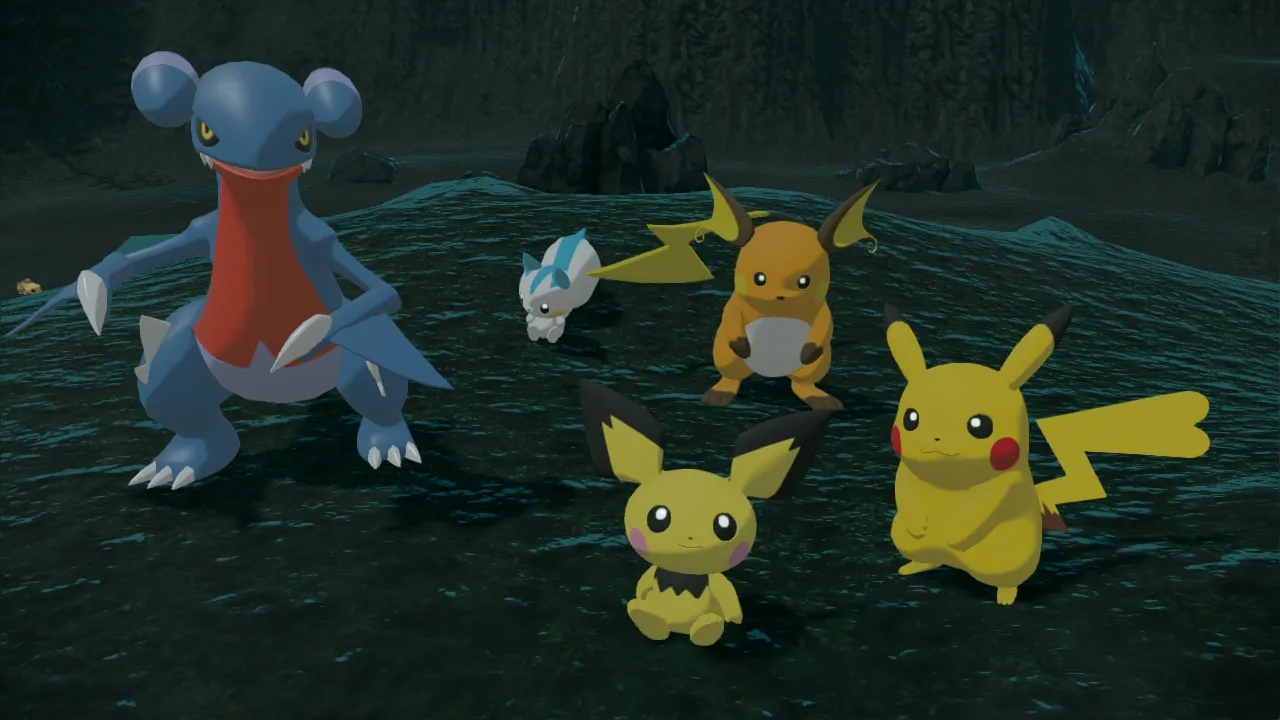
Source: Author.
Out of all the Pokémon of its evolution line, only Gabite's name remained intact when translated to English. This one is likely a combination of gaburi (being the onomatopoeia for a strong bite) + bite.
There are also at least two Pokémon that don't appear in the game directly: Greninja and the Galarian weezing. The former is seemingly the basis for the survey corps unirform, while we see a chimney based on the latter.


Source: Author.
Food
The game has a number of items based on real life food consumed in Japan, but I decided to only list prepared foods (so there are no berries in this list).
Choice Dumpling: These are glutinous rice cakes wrapped in bamboo leaves. They are known as chimaki in Japan, but originate from China where they're called Zongzi.
Old Gateau: Known as yokan in Japan, it's sweet jelly made of red bean paste, agar, and sugar.


Left: Yokan. Source: Tokyo Treat. Right: Chimaki. Source: Entabe.
Potato mochi: Plain mochi refers to a paste made by pounding rice. Potato mochi uses, potato on top of the rice (or potato starch), and a sauce made with soy sauce and rice vinegar/wine.
Swap snack: Visually, it resembles Torii-san's sweet potato cake, the problem is that Torii doesn't use mushrooms in its preparation, and it's unlikely for it to be an old recipe.
Twice-spiced radish: As the description says, this is pickled radish. Rice vinegar is the main ingredient for marinating it, and the red cuts are chilli pepper.



Left: Potato mochi. Source: Makushiba. Centre: Torii. Source: Otoriyose. Right: Radish. Source: Ajinomoto.
Clothing
Unless "Mystery Dungeon" is aprt of your name, you can expect humans in a Pokémon game, and where there are humans there is clothing.
A lot of characters have clothes that don't appear farfetched for the time, but Game Freak did take liberties, specially with clan members wearing stuff like hoodies (which shouldn't have been a thing at the time), fancy footwear and accessories. So I've decided to leave clan members out of this.
The kimono* is a T-shaped wrap garment, usually held in place with a sash known as obi, with the obi itself sometimes held by a decorative thread known as obijime. Beneath the kimono you wear a shirt known as juban.
Characters such as Galaxy Team members seem to be wearing a hanten, a kind of padded jacket. Though it's not impossible it's meant to be some sort of short kimono, as the game's "fancy kimono" is also short .
While commander Kamado wears a kimono, he also wears foreign clothes. His jacket and armor are western, and we can see him wearing a suit in his wedding photo.
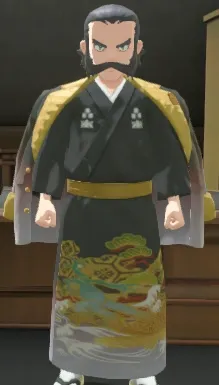
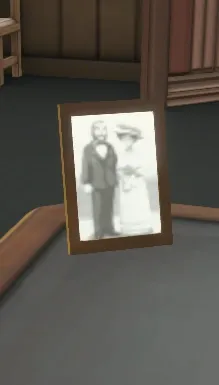
Kamado wearing a western jacket over his kimono. His wedding photo shows him wearing a suit. Source: Author.
Some characters wear an apron from the waist that's known as maekake and is usually worn by tradesmen and craftsmen as they don't restrict movement and have pockets.
Miss Fortune sisters wear kabuki make-up, and sarashi - a cloth usually made of cotton that you can use to wrap your body.
When it comes to legs, it seems a number of characters use trousers known as momohiki, some along with cloth gaiters known as kyahan.
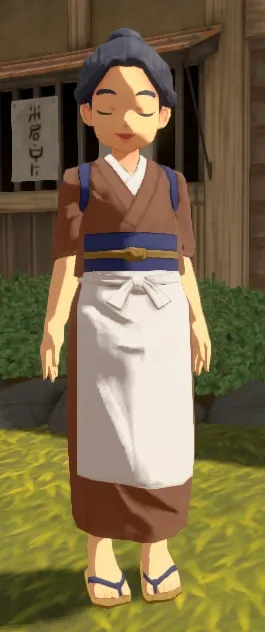
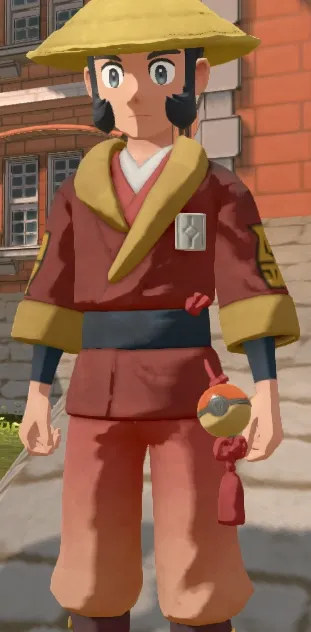
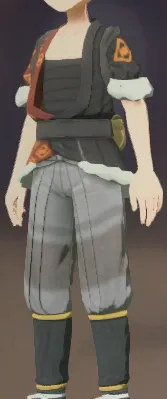
Left: Woman wearing a kimono, obi, obijime, juban, and maekake. Centre: Galaxy team member wearing a henta, momohiki, and amigasa. Right: Playable character wearing fancy kimono with sarashi underneath, kyahan. Source: Author.
We have the tabi, split socks meant to be worn with split footwear, though there's a variety with harder soles that can be worn by itself called jika-tabi (which the game calls split-toe boots). Also, your character will automatically remove their shoes when entering a house as is customary in Japan.
There are a few sandals to choose from:
- Both the ninja footwear and the survey corps sandals seems to be based on the waraji - sandals made of straw.
- The zōri are thonged and are the inspiration for the modern flip-flops.
- Geta sandals are also thonged, and made out of flat wood. They usually have "teeth" to increase its height.

From left to right: zōri, waraji with tabi, geta, jika-tabi. Source: Author.
We see some headwear in the game, the hats worn by the galaxy team is called amigasa (braided hat), the "woven hat" in the item list is called sandogasa, and the twisted headbands you see, as well as the normal headbands that you can buy, are called hachimaki.
Festival masks are just that, it's normal to see people wearing them at festival, some of those masks are based on those worn at noh - a classic theatrical art where performers dance and wear masks for storytelling (it's also one of the oldest theatrical forms still performed today).

From left to right: hachimaki, sandogasa, festival mask. Source: Author.
You can buy an assortment of western clothes, like the bowler hat, which actually makes sense in the setting. The Meiji restoration that began in 1868, saw Japan abolish its isolationist policies and start integrating foreign knowledge and goods, including clothing. For exaple, it became for men in the cities to start wearing suits to work for the middle class and above.
Conclusion
I'm a little disappointed that the treatment the starters got wasn't extended to more Pokémon. But when looking at the franchise at a whole, we can see how Japanese culture and mythology permeates so many of the creatures populating the world.
This list isn't exhaustive either, leaving aside Pokémon that flew under my radar, there are some - like Darumaka and Lotad - that are excluded simply because they don't appear in this game.
Even then, when looking at it with the right knowledge, it's easy to find references and inspirations from Japan. And it can be surprising just how much information was coded into the different Pokémon themselves. Of course, there's a healthy bit of guesswork here too - but that's half the fun!
